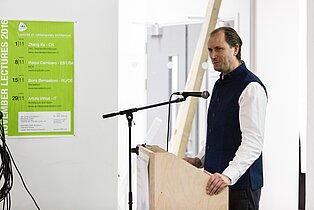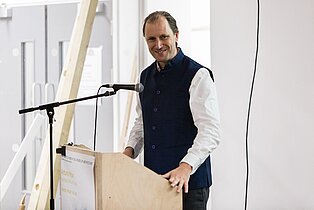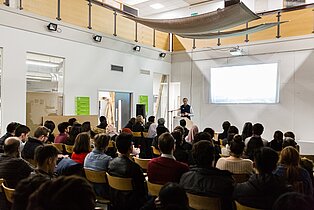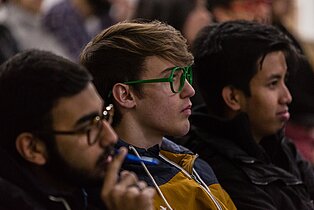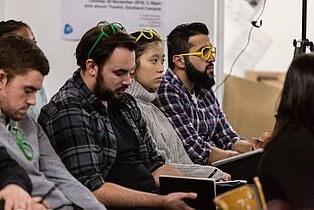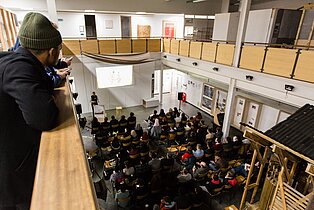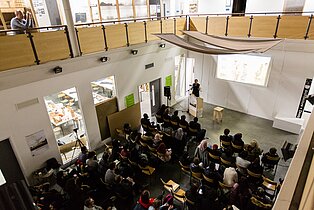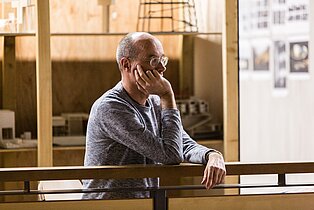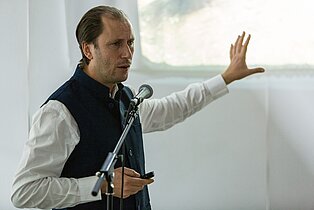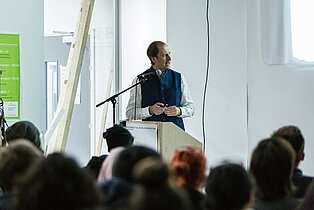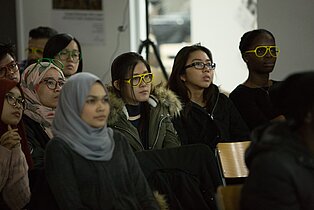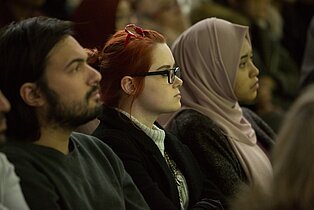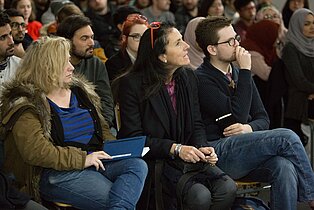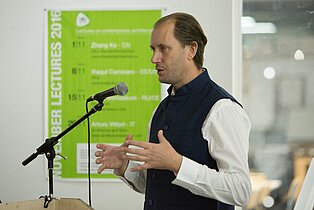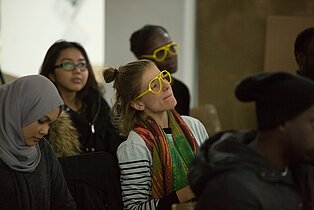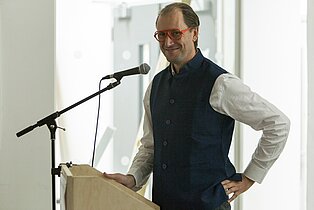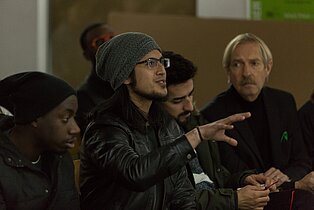Arturo Vittori | Architecture and Vision | Bomarzo
Vittori studied architecture at the University of Florence, and went on to do his Masters in Modena. He spent part of his career in Germany, and until 2006 he worked with Future Systems in London. In 2003 Vittori co-founded his practice Architecture and Vision, based in Bomarzo in Italy, with Swiss architect Andreas Vogler. The international studio engages in the development of innovative architecture, design and technology solutions in fields including the aerospace industry. Vittori hosts design and concept workshops for students at universities worldwide. Architecture and Vision received much coverage in the architectural press and was invited to the 15th edition of the Venice Architecture Biennale with its project Warka Water.
Vittori opened his presentation with the concept of space exploration, and an image of the International Space Station in orbit; a dream that has become a reality, and an achievement that already forms part of our past.
Vittori described designing for an environment with microgravity, in which every object, including the drinking glass, must be reinvented. He described the importance of architecture on the moon to support life, through refreshing and recycling the small amounts of air and water that are brought to space and must be survived on for long periods of time. He asked the audience to imagine themselves as passengers on our planet; travelling through the universe, where all these resources are free.
Vittori moved on to introduce his 2012 project, Warka Water, a venture that began with his travels to rural Ethiopia, and the observations he made there of humans living in a way that is integrated with their environment. Vittori revisited the statistics that motivated him to embark on the Warka Water project, a venture he undertook on his own initiative, in his own time. These included his discovery that 60% of child deaths are due to the lack of safe, portable water, and the bias that exists between the 20-litre minimum daily water requirement that an individual needs, and the maximum personal daily water consumption, which exists in the Emirates – the world’s number one consumer of water, due to the use of air-conditioning. He underlined these facts with the global statistic that every 90 seconds a child dies because of a lack of portable water.
Vittori went on to talk about the inspirations for his project, which include biomimicry, local traditions, and the Warka tree, which in localized areas of Ethiopia forms the basis of a community, offering shelter, fruit and oxygen, in return for protection and nourishment. In terms of biomimicry Vittori referenced the Namib beetle, which survives in dry habitats by drawing water from dew and fog using nanoscale bumps on its body, and cacti, which collect water from the atmosphere with the aid of spines to survive in arid conditions. He also referenced dewponds, used in the UK in the agricultural community to collect and preserve rainwater to serve livestock in hard to reach areas.
Vittori explained the brief he created for himself, to create a system to harvest water for people living in areas in drought. He specified that his solution to water collection must be easy; must carry low environmental impact; must be locally made; must give to the community a minimum of 50 litres of water a day, and must cost less than $1000 to build. He referred to Warka Water as a design philosophy, which can be applied to different environments, and as architecture rather than a water device, as it is designed as both a venue and a resource for the community. He took Prototype 3 of Warka Water to share in his talk.
Prototype 3 is a passive design that consists of five individual modules constructed from bamboo and mesh, which can be constructed on top of one another by a collaboration of ten people, in under an hour. Vittori undertook the prototyping and development of the model near to his practice, in Bomarzo, and financed the project with an open-source funding model. He explained some of the potential improvements to the prototype, which include new super-hydrophobic materials designed to collect water from the atmosphere, which are currently under development.
Vittori went on to share some of the architectural lessons he took from his experience in Dorze, in southeast Ethiopia, where he took Prototype 3, to construct with the community. He began with the phenomena of Dorze houses, which are made entirely from bamboo, and stand for up to 80 years despite the lack of any foundations or internal structure, just through the banana trees that the community plant around them, that act as windbreakers. He explained how the community does not attempt to deter the termites that eat the bamboo, causing the houses to become gradually shorter over their lifespan, instead letting each house biodegrade at the end of its lifecycle.
Vittori presented video footage of members of the community splitting the bamboo and weaving it, with the addition of hemp wire and cables, to make of the individual modules, and then a video of the collaboration of around fifteen members of the community mounting these on top of each other to form the tower, in less than half hour. The video showed the community dancing, eating and drinking around the tower, under the canopy that was attached, as part of a celebration that lasted into the night.
Vittori then briefed the audience on his regular follow up visits to the project, and improvements that have been implemented, including a fence that has been built around the structure to keep out sheep that were eating the ropes, and the addition of organic solar panels for USB charging.
Vittori shared his future plans for Warka Water, which he is taking to Haiti, Madagascar, India Indonesia and Nepal. Vittori’s closing message to the audience was to stop being a passenger on this planet and to become a crewmember, to improve the plight of our world using the capacity to design.
Video-Interview with Arturo Vittori
Visit our YouTube-Channel




